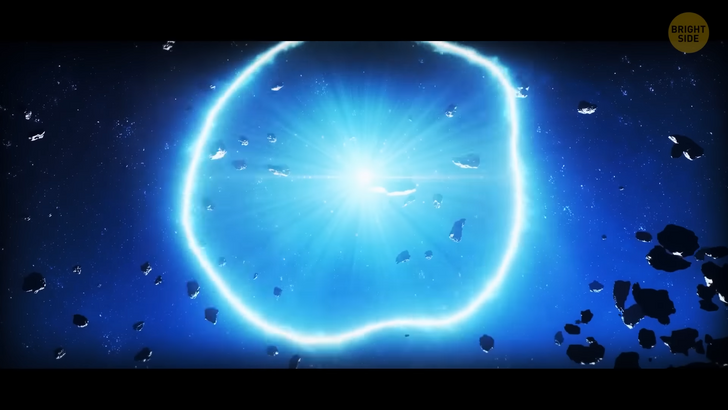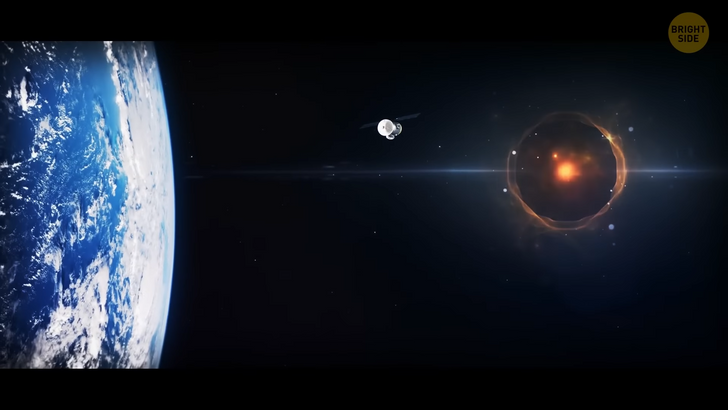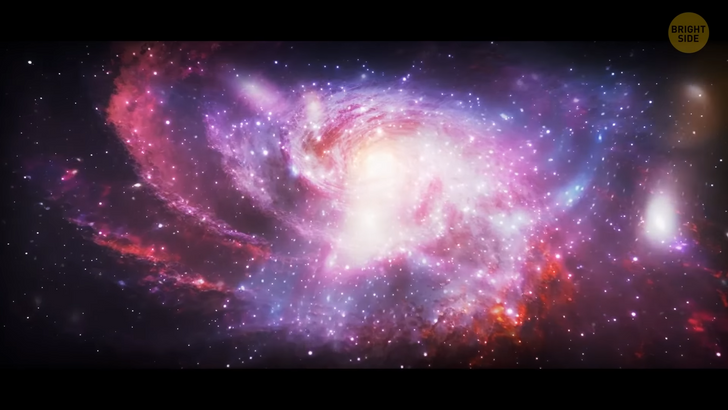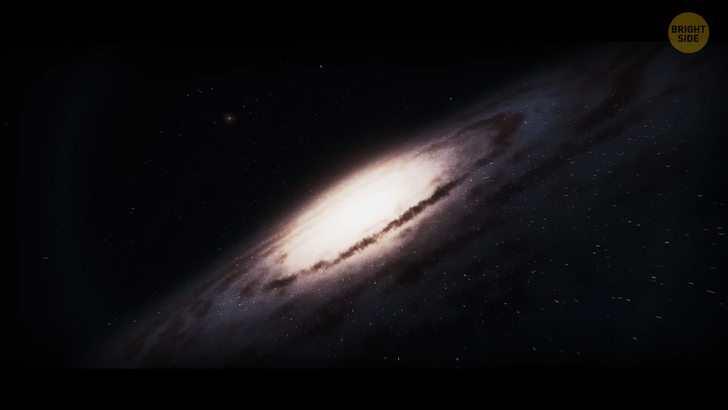10 Thanksgiving Stories More Stuffed With Drama Than Your Holiday Turkey

Astronomers have recently found a strange object far away from Earth. It disappears every two minutes and sends out waves of radio noise three times in one hour. It was first seen by a student named Tyrone O’Doherty while he was looking at the sky in his home country, Australia.
This space object appears to be different from anything else we’ve seen before in space. Because of their “calculated” movements, scientists call these types of objects “transients.” Turns out, they are not that rare to find. When scientists study transients, most of the time, they look near a big star or near the things it leaves behind after it goes out.

Transients come in all sorts of shapes and sizes. Some transients are slow, take a few days to appear, and stay around for a couple of months. Other transients are very fast and only appear for a second. But there are not many transients that are in between these two speeds. It’s what makes this latest discovery very special and unexpected.
Speaking of weird things we’ve found in the Universe, the toughest object we know of is made from the remains of a star that has faded away. Scientists have found out through experiments that when the center of a faded star is squeezed by a lot of gravity, it turns into a type of spaghetti-like material that is extremely strong. Even if you could technically touch it with your hand and try to break it, you would need to use 10 billion times more force than it takes to break steel.
Planets can be weird too. Haumea is a perfect example. This dwarf planet moves around the Sun far away from Earth, beyond Neptune. It’s different from other planets because it’s shaped like a sausage and has two small moons. It also spins very fast: one day on this planet is only four Earth hours long. In 2017, scientists saw something strange when Haumea passed in front of a star. They noticed very thin rings around it, which probably appeared when other various space objects were hitting each other in its vicinity a long time ago.

Ever heard of a moonmoon? It’s a fancy name for a moon that orbits another moon. People on the Internet let their creative side go wild with this one and gave it all sorts of different names, like submoon, moonito, grandmoon, and moonette. This kind of object is just a theory right now, but scientists think it’s possible that it might exist. Maybe someday we’ll discover one!
There are many strange moons in our Solar System, like Io, which is very volcanic, and Triton, which has geysers. But one of the weirdest-looking ones is Hyperion. This one is a rocky moon with many craters that looks like a pumice stone. A spacecraft called Cassini also found that Hyperion has a beam of static electricity flowing out from it. The reason for this weird activity is still up for debate.
Not all stars behave the same, either. When a scientist named Tabetha Boyajian and her team looked at this star [called KIC 846285], they were confused. Also known as Tabby’s star, this space object would dim unexpectedly (sometimes for as much as 22%) for random periods of time. People had different theories about why this could happen, including the idea that it could be caused by another life form lurking in the Universe! However, now, most people believe that the star is surrounded by a strange ring of dust that makes it look darker every now and then.

Some galaxies are equally unusual. DGSAT I is a type of galaxy called an ultra-diffuse one. This means that it is very big, similar to our own Milky Way Galaxy, but it has very few stars and is hard to spot with regular telescopes. Scientists discovered DGSAT I in 2016 and noticed that it was all by itself, which is unusual for ultra-diffuse galaxies. This means that DGSAT I is very old and formed a long time ago, about 1 billion years after the beginning of the Universe.
NGC 247 is another weird spiral galaxy that looks almost made up. It is smaller than the Milky Way and has bright areas where new stars appear. However, there’s also a dark “void” on one side of the galaxy’s core that looks like a hole. Some theories suggest that this void could have been caused by gravitational interactions with another galaxy or a blob of dark matter. Another theory suggests that it could be the work of another civilization building something weird in there.
The Exotica Catalog lists some unusual galaxies that might have big civilizations living in them. Scientists are trying to build new telescopes that will make it easier to find them. The Vera C. Rubin Observatory in Chile, for example, will be able to look at the entire sky repeatedly and see if there are any changes that could help us locate some foreign space cousins.

Just in case you ever stumble upon this word, a neutrino is a particle smaller than an atom, with no electric charge and a very small mass. They are produced during nuclear reactions, such as those that occur in the Sun. Neutrinos are extremely difficult to detect because they interact with other types of matter very weakly.
Scientists use large underground or underwater detectors to spot neutrinos. They study their properties to gain a better understanding of the Universe and its origins. On September 22, 2017, a powerful neutrino hit Earth. This kind of thing happens often, but this one was special because scientists were able to figure out where it came from! They discovered that it was sent to Earth 4 billion years ago by a very big black hole in a galaxy that was eating up everything around it.
Do you think you have an impressive jewelry collection? Wait until you hear this. Astronomers have discovered a planet that is mostly made of diamond. The planet, called 55 Cancri e, is a “super-planet” and is located in our Milky Way galaxy. Scientists believe that at least a third of the planet’s mass is pure diamond. This is the first time a rocky planet with this kind of composition has been discovered. 55 Cancri e is very different from Earth, as it has a lot of carbon and is very hot, making it unlikely for life as we know it to exist on it.
We’ve learned a lot of things about the Universe with the help of our trusted Hubble Space Telescope. One of the most famous images taken by it is called the “Pillars of Creation.” This is a photo of a region of the Eagle Nebula where new stars emerge rapidly. Captured in 1995, this picture allowed us to see massive pillars of gas and dust towering above the nebula and has become one of the most iconic images of the Universe. Some of your friends might even use it as wallpaper on their phones!

The Sun we spin around is a lone wolf. In reality, many stars in the galaxy have companions. Castor is one of these — it’s a group of six stars that make up one of the brightest and most beautiful systems in the night sky.
People have been looking at Castor for a long time, but they hadn’t known it was actually six stars until telescopes and spectroscopes were invented. Even with a small telescope, you can see that Castor has two main stars, Castor Aa and Ba, that orbit each other. These stars are bigger than the Sun, and it takes them 467 years to orbit each other.
Scientists from Asia found over 500 stars that are way weirder than those we’ve been familiar with. They move quickly around the center of our galaxy, the Milky Way. Some of these stars move so fast that they will, at one point, leave the Milky Way! The team behind the project used two telescopes to study these stars and properly understand their speed. These days we call them high-velocity stars.











